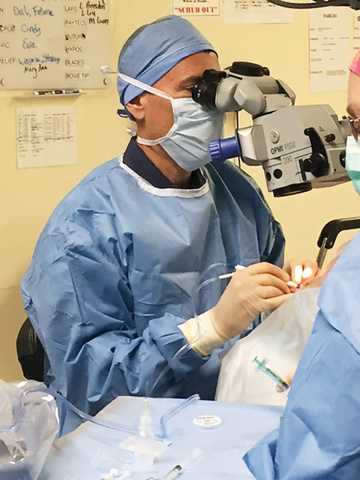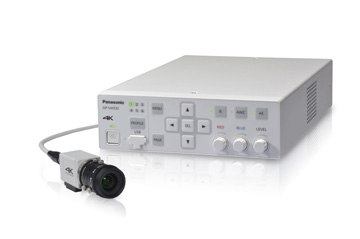Removing at-home drop regimens eliminates compliance and administration issues.
 Kaiser Permanente
Kaiser Permanente
DROP ELIMINATOR Dr. Neal Shorstein says performing dropless cataract surgeries is an efficient procedure that reduces surgeons' concerns about patients' post-op recoveries.
After a typical cataract surgery, patients must safely and properly administer a staggering number of drops at home in the ensuing days and weeks to prevent infection and inflammation. Unfortunately, many patients don't use proper technique or stick to the rigorous schedule.
Neal Shorstein, MD, an ophthalmologist at Kaiser Permanente in Walnut Creek, Calif., says several studies show that most cataract patients instill drops incorrectly. For example, they may touch the tip of the eye drop bottle, scrape the cornea during administration or miss the eye altogether. He sees a solution to this problem in the form of the thousands of "dropless" cataract surgeries he has performed.
At the end of a cataract procedure, Dr. Shorstein injects the antibiotic moxifloxacin into the eye's anterior chamber to reduce the risk of endophthalmitis. No FDA approved moxifloxacin product is currently indicated for this use, so the drug must be compounded by a vetted 503B outsourcing pharmacy. "Ordering it, setting up shipping and having it stored properly takes some preparation and time," he notes.
While many surgeons still prescribe topical antibiotic drops in addition to administering the intraoperative injection, Dr. Shorstein says emerging research continues to favor the dropless trend, and increasing numbers of physicians are realizing topical drops aren't necessary when injections are administered.
Dr. Shorstein also injects triamcinolone, a sustained-release, long-acting steroid, into the subconjunctival space at the end of surgery to prevent post-op inflammation. He says this off-label use of an FDA approved product is as effective as administering topical steroid drops.
Two FDA approved products, Dexycu and Dextenza, have recently emerged to give surgeons another effective option for administering the steroid treatment. "Both of these products remain in place for about two to three weeks and provide long-acting steroid administration to the eye," says Dr. Shorstein. "These drugs definitely give us surgeons peace of mind, while patients love the practice because they don't need to constantly put in drops throughout the day."
.svg?sfvrsn=be606e78_3)



.svg?sfvrsn=56b2f850_5)